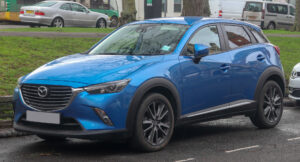The automotive industry is one of the most well-recognized forms of business adopted worldwide today. The year 1886 is considered the birth of the contemporary automotive industry. That’s when Karl Benz made the first (modern) car. Since then, the industry has flourished with the help of technological improvements. Automobiles were made available to the general public in the early 20th century. The interest of the people in these automobiles has made the industry grow in every perspective. Today some of the most renowned producers are based in Germany, the US, and Japan. The automotive industry is worth roughly around $257 billion worldwide, but there is growth potential.
People have begun to expect more from the automobile industry. Over time, the needs and likes of the consumers are being met by producers. And they have used technology to achieve their goals. Keeping these things in mind, automotive industrialists have had to adapt to the changing environment and take measures to keep their consumers interested in their products.
Changing Trends
The automotive industry has focused on quality mass production to improve user experience. Here we will shed some light on the top three trends of the industry and their prospects.
BEVs and Hybrid Vehicles
The latest trend these days that has transformed the automotive industry is the introduction of electric vehicles. Electric vehicles are environmentally friendly since they do not emit harmful gases, unlike ICE cars. Electrics and hybrids are famous around the globe. The environmentalists also welcome their introduction to the market. They believe that EVs will be beneficial to consumers and the environment by reducing pollution.
Electric vehicles are also known as EVs. The two basic types of electric vehicles are AEVs (all electronic vehicles) and hybrid vehicles. All-electric vehicles use power from a battery to power their motors. This battery has to be charged using a power socket. Any power socket in your home could work. And with an hour’s charge, an average electric vehicle can give you an 80 to 100 miles range. On the other hand, we have hybrid vehicles that also come with a battery. This battery powers an electric motor, but it is charged differently. Alternatively, hybrid vehicles are not free of emissions as they still use fuel as a primary source of energy. Electric vehicles are cleaner and more efficient as they are nearly free from emissions that pollute the air.
As compared to conventional vehicles, electric vehicles are generally higher priced. However, the maintenance cost of these vehicles is negligible, and according to a study, using EVs can even save you around $700 to $1000 a year. There is hardly any refuel cost, and that is why vehicles made by electric vehicle manufacturers like Tesla are becoming famous.
The Rise of Ride-Sharing Apps
The second positive trend the automotive industry has experienced is related to ride-sharing apps. The rise of online-taxi services, such as Uber and Lyft has led to a decline in taxis. As a result, unemployed people have found an opportunity to earn some money.
Ride-sharing companies soon came directly in conflict with the taxi cab services, and numerous lawsuits were filed. This idea hindered the growth of ride-sharing apps. The basic reason for the rise in ride-sharing apps’ popularity is that the expenses of the consumers living in urban areas have increased to such an extent that they find it very difficult for a car. The younger generation who has yet to settle up can find it hard to meet their expenses, which makes them use facilities such as public transport or ride-sharing as they believe buying a car is not the thing for them.
Street Legal Hyper Cars
Street legal hypercars are dominating the automotive scene nowadays. The idea is not new. The pursuit of speed led to the creation of sports cars, and it hasn’t ended yet. Many motorheads love to ride fast cars, but they are not able to find street-legal fast cars. The vehicles, which they modify, are seldom street-legal. At times, they are rejected by the authorities due to safety issues. Recently, manufacturers like Porsche, Koenigsegg, and Bugatti have been going head to head to make the fastest street-legal car. These cars are capable of reaching speeds over 250 mph, and they are street legal. Manufacturers are shifting their minds towards making hypercars that are efficient, cheap, and powerful.
Final Thoughts
The progressive approach around the globe has led to technological advancements in the automobile industry. Competition has risen, and every producer is now focusing on making the best possible vehicles for their consumers. The rising number of environmental threats related to global warming have urged manufacturers to make environment-friendly cars. It was not late before hybrids became famous in the international market. Toyota rolled out the Prius hybrid car, and it immediately became the best-seller in the category.
On the other hand, ride-sharing apps came to the front lines and made a place for themselves. Taxis are now almost obsolete, and why shouldn’t they be? Ride-sharing apps made it easier for people to explore places. Furthermore, unemployed people got an opportunity to work with giant companies.
Another prospect for the future is the concept of driverless cars. Countries like the UAE are thinking of implementing the technology. They have welcomed the idea of introducing such driver-less taxis available for their public since it means that public transport will be easily accessible. As time passes, we are sure to see more technological trends that are beneficial for the consumers.










